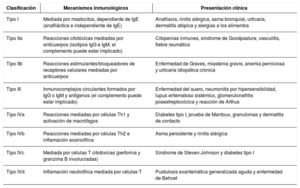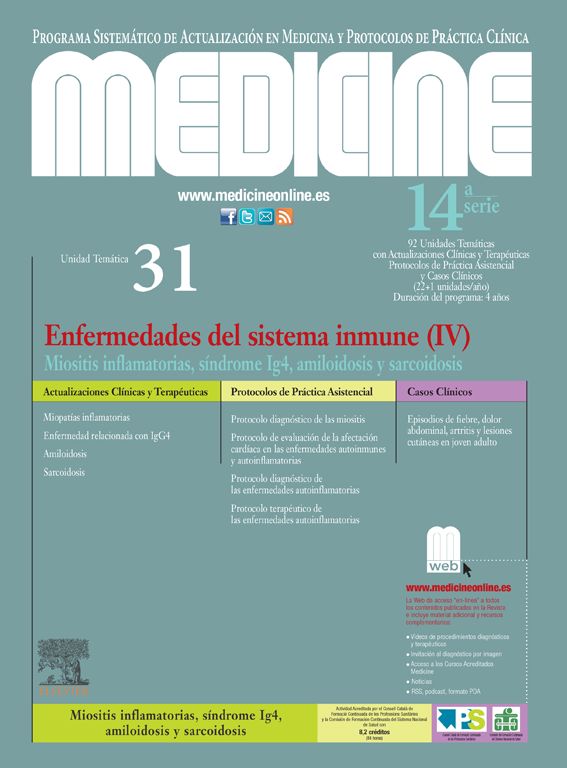El sistema inmunológico es necesario para defender al huésped contra las infecciones. Sin embargo, las propias respuestas inmunitarias son capaces de causar lesiones y enfermedades en los tejidos. Las reacciones inmunitarias nocivas o patológicas se denominan reacciones de hipersensibilidad. Una respuesta inmune a un antígeno puede dar como resultado una sensibilidad al desafío con ese antígeno y, por lo tanto, la hipersensibilidad es un reflejo de respuestas inmunes excesivas o aberrantes. Históricamente, las reacciones de hipersensibilidad debidas a respuestas inmunológicas fueron clasificadas por Gell y Coombs en cuatro tipos, de los cuales las reacciones de hipersensibilidad de tipo I representaban reacciones alérgicas de tipo inmediato mediadas por anticuerpos IgE, siendo la activación de los mastocitos el principal mecanismo efector final. Las respuestas de hipersensibilidad de tipo II y III se definieron como aquellas impulsadas por anticuerpos IgG específicos de antígeno, siendo el mecanismo efector final el complemento (tipo II) o los efectores celulares portadores de FcR (tipo III). Por último, se describieron las respuestas de hipersensibilidad de tipo IV que están impulsadas por efectores celulares, incluidos los linfocitos y una variedad de tipos de células mieloides. Los trastornos causados por respuestas inmunitarias inadecuadas se llaman enfermedades por hipersensibilidad. Este término surge de la definición clínica de la inmunidad como sensibilidad, que se basa en la observación de que un sujeto que se ha expuesto a un antígeno exhibe una reacción detectable o es sensible a encuentros posteriores con ese antígeno.
Palabras clave
The immune system is necessary to defend the host against infections. However, immune responses themselves are able to cause injury and disease in tissues. Damaging or pathological immune reactions are called hypersensitivity reactions. An immune response to an antigen can produce sensitivity to a challenge from this antigen and thus, hypersensitivity is a reflection of excessive or aberrant immune responses. Historically, hypersensitivity reactions due to immune responses were classified by Gell and Coombs into four types. Type I hypersensitivity reactions were immediate allergic reactions mediated by IgE antibodies, with activation of mast cells being the main final effector mechanism. Type II and III hypersensitivity responses were defined as those driven by IgG antibodies specific to the antigen, with the final effector mechanism being the complement (type II) or FcR bearing cell effectors (type III). Lastly, they described type IV hypersensitivity responses, which are driven by cell effectors, including lymphocytes and a variety of myeloid cell types. Disorders caused by inappropriate immune responses are called hypersensitivity diseases. This term arises from the clinical definition of immunity as sensitivity, which is based on the observation that a subject who has been exposed to an antigen exhibits a detectable reaction or is sensitive to later encounters with that antigen.
Keywords
Identifíquese
¿Aún no es suscriptor de la revista?
Comprar el acceso al artículo
Comprando el artículo el pdf del mismo podrá ser descargado
Teléfono para incidencias
De lunes a viernes de 9h a 18h (GMT+1) excepto los meses de julio y agosto que será de 9 a 15h







